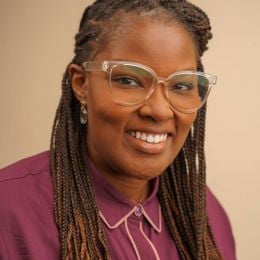Curing the Crises: Caregiving, Housing and the Black Middle Class
Black caregivers can begin to build generational wealth through home ownership while still fulfilling family commitments
According to the American Society on Aging, 14% of family caregivers — approximately 7.2 million people — identify as Black. Due to decades of discriminatory lending practices and accelerated foreclosures on Black-owned homes by banks and tax authorities, Black families are more likely to rent than own homes. With the rising cost of rent across the country, many families with care relationships may be facing housing insecurity.

Homeless shelters are not equipped to help older adults in poor physical or mental health. Groups like Habitat for Humanity are discussing pathways to home ownership for Black Americans, particularly those on the cusp of becoming "housing insecure," meaning they have missed a mortgage or rent payment or are certain to do so next month.
Sacrificing for the Family
These programs may create generational wealth, which benefits caregivers, many of whom have had to sacrifice opportunities to access homeownership and its subsequent wealth because of their caregiving commitments within the family.
Middle-class renters of all races may benefit from learning about programs that provide rental assistance and equip people with the resources to access home ownership and pass down generational wealth, while continuing to be able to provide care in their homes and communities rather than move older relatives into institutions (the preference of 88% of Americans, according to a nationwide survey by the University of Michigan).
However, many Black family caregivers may find themselves unable to tap into existing resources for homeownership unless they are facing abject poverty. To avoid ending up in such a precarious situation, it is important to understand the contributing factors and potential solutions.
Black Women and Care
Black women are more likely than their white counterparts to provide unpaid care for an aging or disabled family member, according to research published in the journal Gerontology. Because of caregiving responsibilities, many Black women are forced to leave the workforce, thus sacrificing prime earning years to ensure their family member is well cared for and safe.
"Quality of life desires means quality of life choices are limited."
Those who remain in the labor market often fall victim to the gender and racial wealth gap, earning just 69 cents for every dollar earned by white men.
Furthering the inequity is the often-gendered cultural concept of familialism, which puts the needs of the family ahead of the desires of individual members. Eldest and only daughters are expected to put personal goals such as savings, retirement and home ownership aside if another family member needs care. This helps explain why 75% of unpaid caregivers are women.
Black and immigrant women are also more likely to be employed outside the house as care workers in facilities for children as well as older adults, for which many are paid poverty-level wages, according to research by the Paraprofessional Healthcare Institute (PHI).
The fact that these essential workers are not being paid the living wages they deserve for jobs that can be emotionally and physically demanding adds to the inequity of Black family caregivers who are forced by circumstances to take these types of jobs.
Whether because they have poor credit or are not eligible for federal grants, Black caregivers are struggling to attain the elusive American dream.
Additionally, Black families may find themselves in personal homes where they are unable to make necessary modifications as inhabitants age or become disabled. If they are unable to create a more accommodating home by adding ramps and grab bars or remodeling a bathroom, for example, they may need to seek new housing for which they may be financially underqualified.
Home and community-based services (HCBS) like home modifications or in-home care are also commonly out of reach for many older adults and their families because they are not paid for by Medicare and many middle-class families are not eligible for the Medicaid waivers through which most HCBS programs are accessed.
Sanctioned Discrimination
Without access to generational wealth, middle-class Black women caregivers are at risk of living on the financial bubble, where they do not have the funds needed to buy a home but make too much to qualify for most government-funded housing programs. Whether because they have poor credit or are not eligible for federal grants, Black caregivers are struggling to attain the elusive American dream.
Overall home ownership by Black Americans over 65 has declined from nearly 70% in 2005 to 53.6% in 2019, Odette Williamson of the National Consumer Law Center said in a 2023 presentation to the Columbia Aging Center.
Black caregivers who expect to inherit a relative's home may receive devastating news if the relative passed away before transferring the property deed to the caregiver or preparing a will instructing the executor to do so.
Sad Surprise of a 'Tangled Title'
The result is a situation called "heirs' property" or "tangled title," which means a deceased person's name is on the title to property occupied by someone else. Property cannot easily be sold or transferred with a tangled title; it is one of the leading barriers to homeownership among Black adults.
Black caregivers also encounter hurdles when they try to rent homes. Linda Couch, of Leading Age, said in a 2023 presentation for Columbia University's Age Boom Academy, that the 2.7 million units participating in the Department of Housing & Urban Development's Housing Choice Vouchers program (more commonly known as Section 8) are too few to house all the qualifying low-income residents, leaving middle-class Blacks with limited options for housing.
A Path to Housing Liberation
While little progress has been made in increasing housing options for the Black middle class, there are groups and organizations examining potential solutions to the housing crisis that group faces. Chanee Fabius, an assistant professor in the Johns Hopkins Bloomberg School of Public Health, has said that the biggest barriers to obtaining home and community-based services include access to and the stigma around Medicaid programs.
"You see this every time there's a recession or housing crisis. Majority African-American neighborhoods take a harder hit."
However, increasing access to HCBS education for Black middle-class families may mean that families are less likely to engage in Medicaid spend-down — state programs that allow people to subtract non-covered medical expenses and Medicare cost-sharing fees from their income in order to become eligible for Medicaid services.
If fewer middle-class Black families participate in Medicaid spend-down, those who own homes may find themselves better situated to maintain ownership and pass that home along to family caregivers. When asked how to best mass-educate Black and brown communities, she challenged families to have serious discussions and "keep pressing the issue around what people actually want to do so I can get you access."
Homes Don't Meet Homeowners' Needs
In a 2023 interview, Rodney Harrell, who leads housing initiatives for AARP, described the greatest obstacle to housing for the Black middle class. "The fact that many of the homes we have don't meet the needs over time," he said. "You see this every time there's a recession or housing crisis. Majority African-American neighborhoods take a harder hit."
He goes on to explain that people who want to create a better life for their families but have even more compromises are limited in where they can go. "Quality of life desires means quality of life choices are limited." Harrell mentions things like the inability to access the second floor of one's home, modify one's home, or choose a new home greatly impact quality of life for Black Americans.
Accommodations called accessory dwelling units (ADUs) — such as an attached apartment or an in-law suite – are often not options in predominantly African-American communities because of local zoning laws. The American Planning Association tracks the legacy of limiting housing options in historically Black communities through zoning barriers, Harrell says. At the same time, groups such as AARP are exploring other affordable housing options, like duplexes and triplexes.
Inform Yourself, Reform the Law
Harrell, like Fabius and other experts, also call on renters and homebuyers to learn about neighborhoods before choosing to move in to them. For example, the AARP Livability Index, an easy-to-use online tool, can instantly show data on affordability, transportation, housing and safety, as well as pollution, access to health care, parks, libraries, grocery stores and other factors in a city, a neighborhood or a particular street.
Equipping Black middle-class caregivers with knowledge and resources is not on its own all that's required to allow them to pursue the highest possible quality of life. To completely address the cumulative disadvantages of people who belong to historically disenfranchised groups, it will be necessary to disassemble systemic oppression and unethical practices, such as redlining.

Her versatility has enabled her to publish works both in academic journals and popular publications, including the American Society on Aging’s Generations Journal, Blavity, Thrive and Nursing Administration Quarterly. She recently completed the Columbia University’s Age Boom Academy 2023 fellowship cohort. Read More

